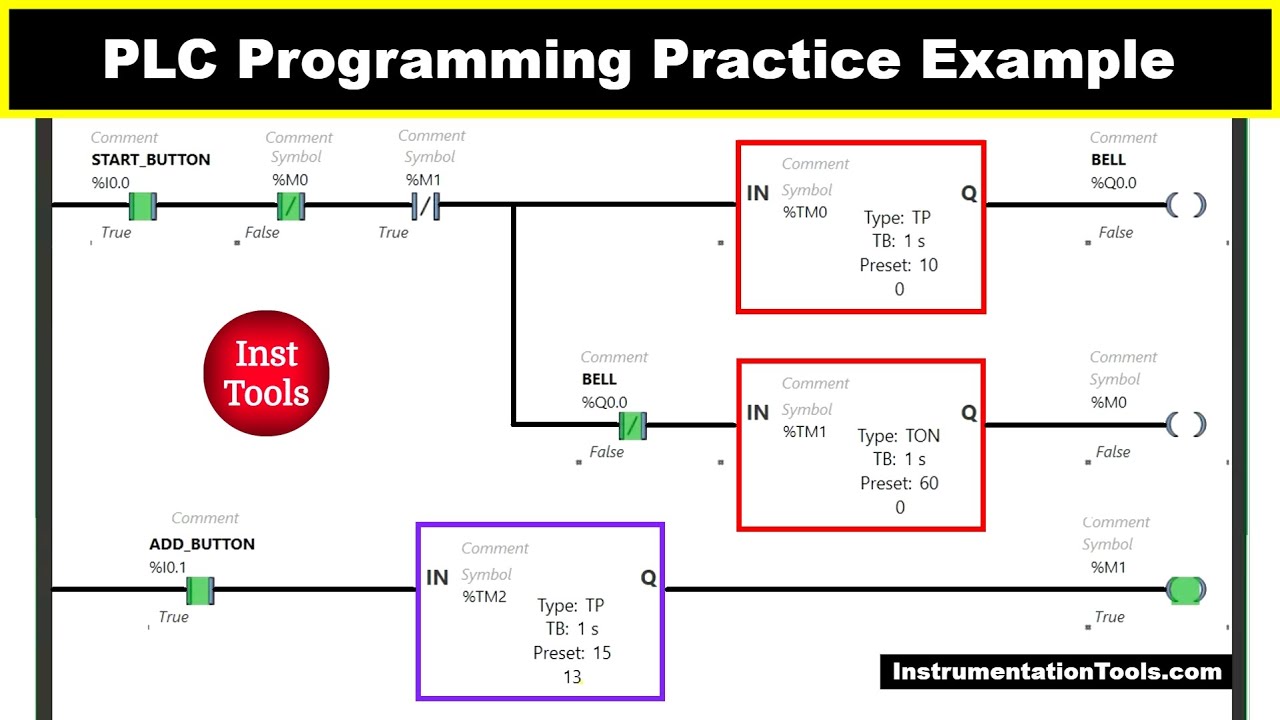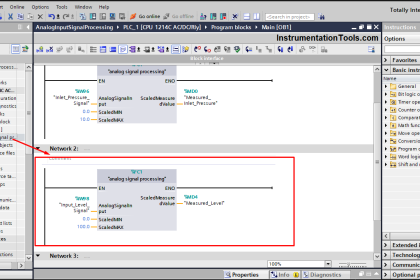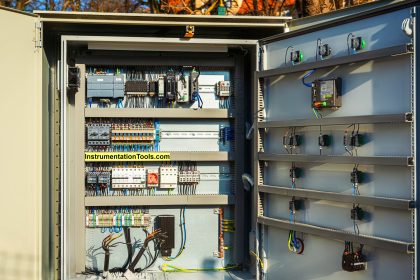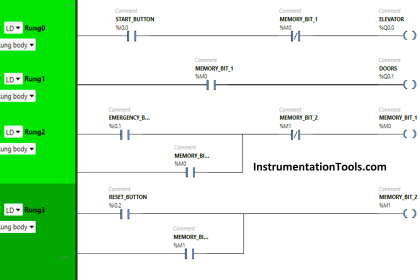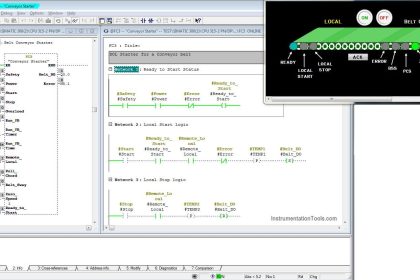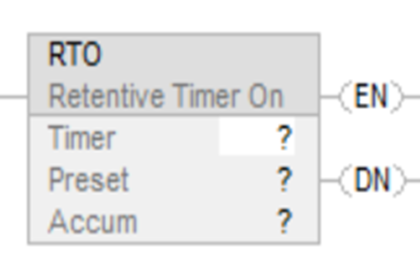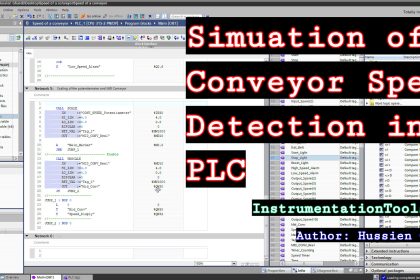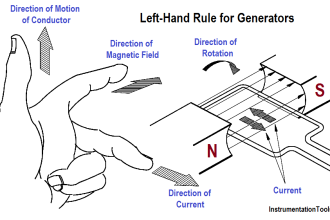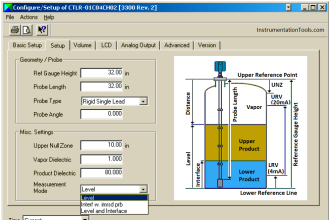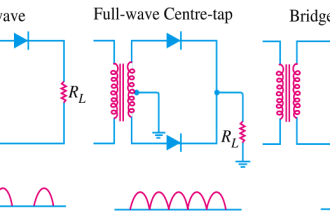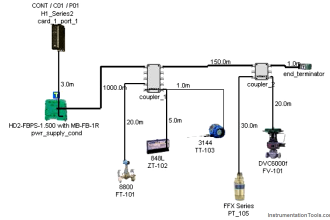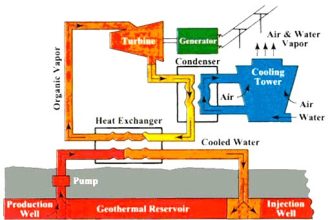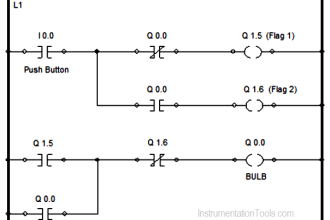Now we discuss the classroom bell system logic to learn the PLC programming with practice examples and solutions.
Note: These PLC programs are primarily for engineering students to learn and practice the problems.
Classroom Bell System
Problem Statement:
Design a PLC ladder logic for the following application.
We are using two toggle switches to control Bell.
The bell should ring for 10 seconds after every 45 minutes (Let’s take it as 1 minute). If the add button is pressed then there will be a time delay of 15 seconds for the bell to get ON.
PLC Technical Training Videos
The best PLC technical training videos are available on the Instrumentation Tools YouTube channel for free of cost.
The below video explains the given problem statement and its solution.
Inputs & Outputs
Digital Inputs:
Start Button: I0.0
Add Button: I0.1
Digital Outputs:
Bell: Q0.0
PLC Programming Practice Examples

Program Description
We have used Normally Open Contacts for the Start Button (I0.0) and Add Button (I0.0).
We have used Normally Closed Contacts for Memory Bits.
In Rung 0:
- Normally Open Contact is used for the Start Button (I0.0) to Turn ON the output Bell (Q0.0) and Memory Bit 1 (M0).
- Normally Closed Contacts are used for Memory Bit 1 (M0) and Memory Bit 2 (M1) to Turn OFF and Restart the outputs Bell (Q0.0).
- Timer Function Block type TP is used to Turn ON the output Bell (Q0.0) for a limited time.
- Timer Function Block type TON is used to delay the turning ON time of the output Memory Bit 1 (M0) for some time.
In Rung 1:
- Normally Open Contact is used for the Add Button (I0.1) to Turn ON Memory Bit 2 (M1).
- Timer Function Block type TP is used to Turn ON Memory Bit 2 (M1) for a limited time.
PLC Program Testing
Now we will test our PLC program and the results discussed below.
When the Start Button is turned ON
When the Start Button (I0.0) is turned ON, the output Bell (Q0.0) will turn ON for 10 seconds as Timer Function Block type TP is used to Turn ON the output Bell (Q0.0) for a limited time. The time is set to 10 seconds.
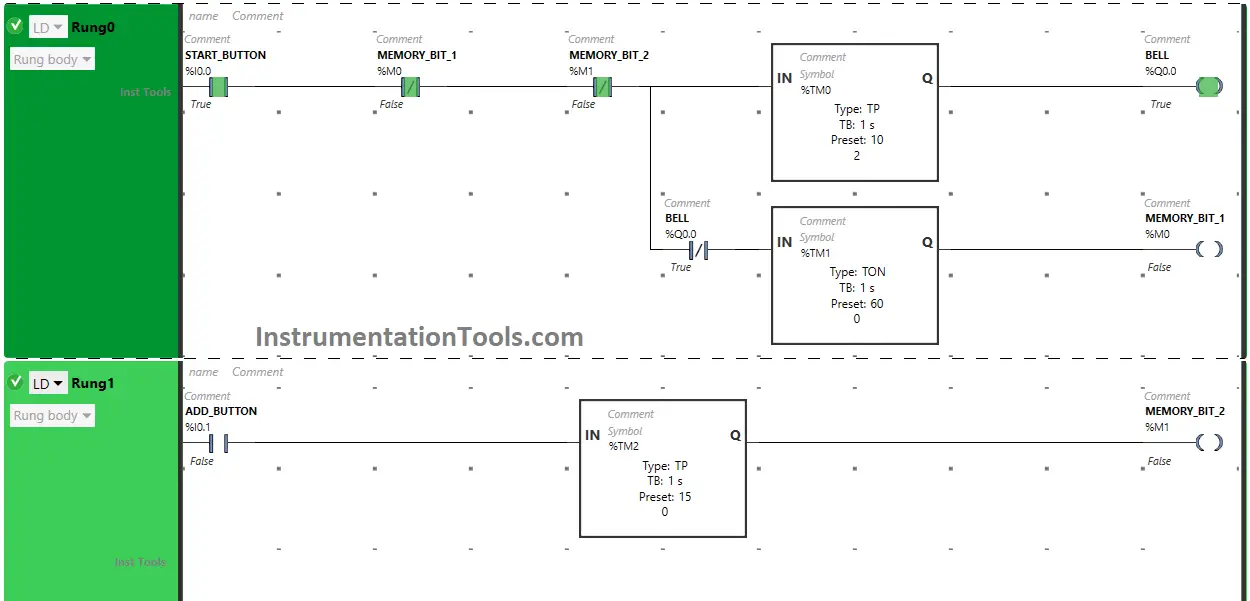
In a false state, Normally Closed Contacts used for Memory Bit 1 (M0) and Memory Bit 2 (M1) pass the signal to turn ON the output Bell (Q0.0).
After 10 seconds, the output Bell (Q0.0) will turn OFF.
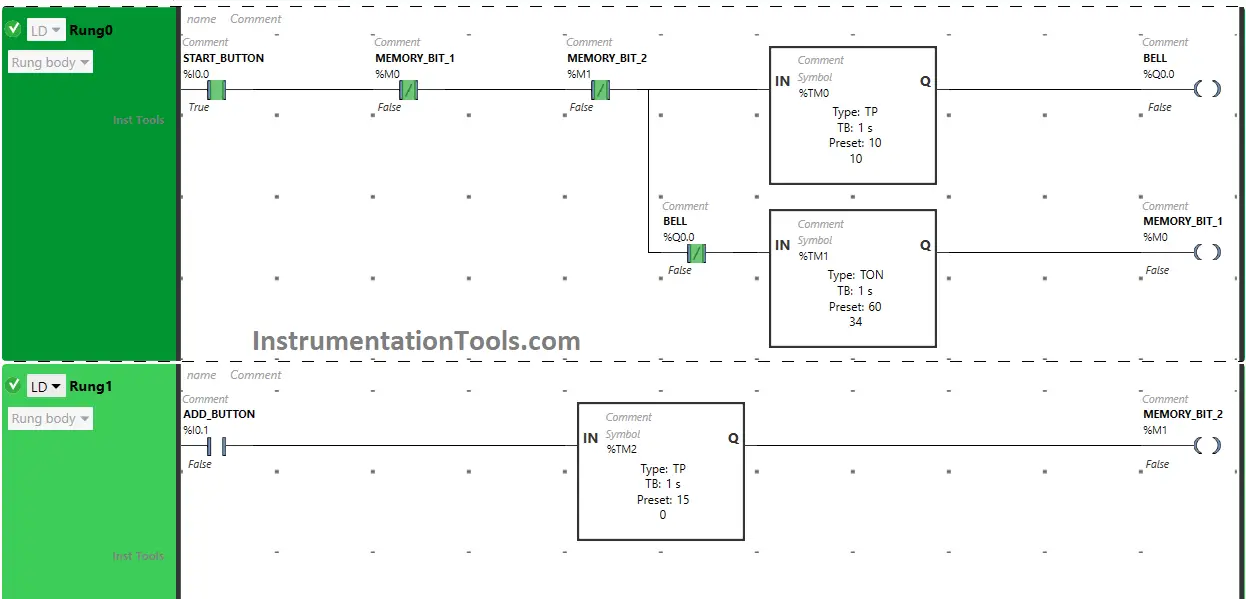
Also, when the Start Button (I0.0) is turned ON, Memory Bit 1 (M0) will turn ON after 60 seconds as Timer Function Block TON is used to delay the turning ON time of Memory Bit 1 (M0).
When Memory Bit 1 (M0) turns ON, it will turn OFF immediately as Normally Closed Contact is used for it to turn ON the Output Bell (Q0.0).
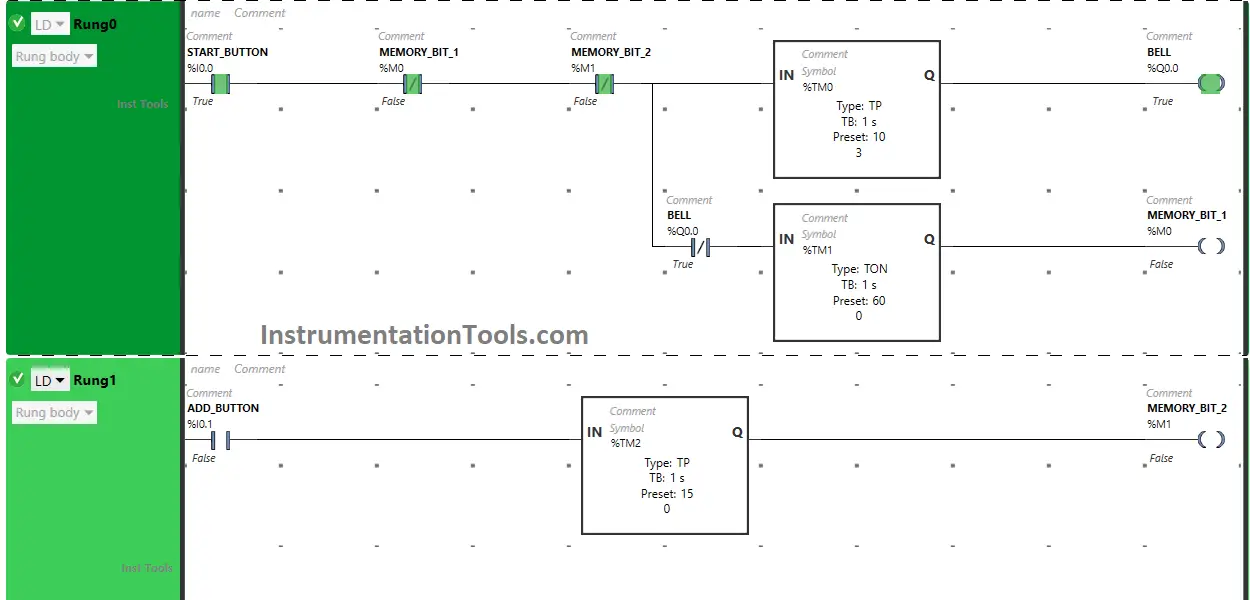
So, when Memory Bit 1 (M0) turns OFF immediately, Normally Closed Contact used for Memory Bit 1 (M0) again passes the signal to turn the output Bell (Q0.0) for 10 seconds as Timer Function Block type TP is used to Turn ON the output Bell (Q0.0) for a limited time.
When the Add button is turned ON
When the Add Button is turned ON, Memory Bit 2 (M1) will turn ON for 15 seconds as Timer Function Block type TP is used to Turn ON Memory Bit 2 (M1) for a limited time.
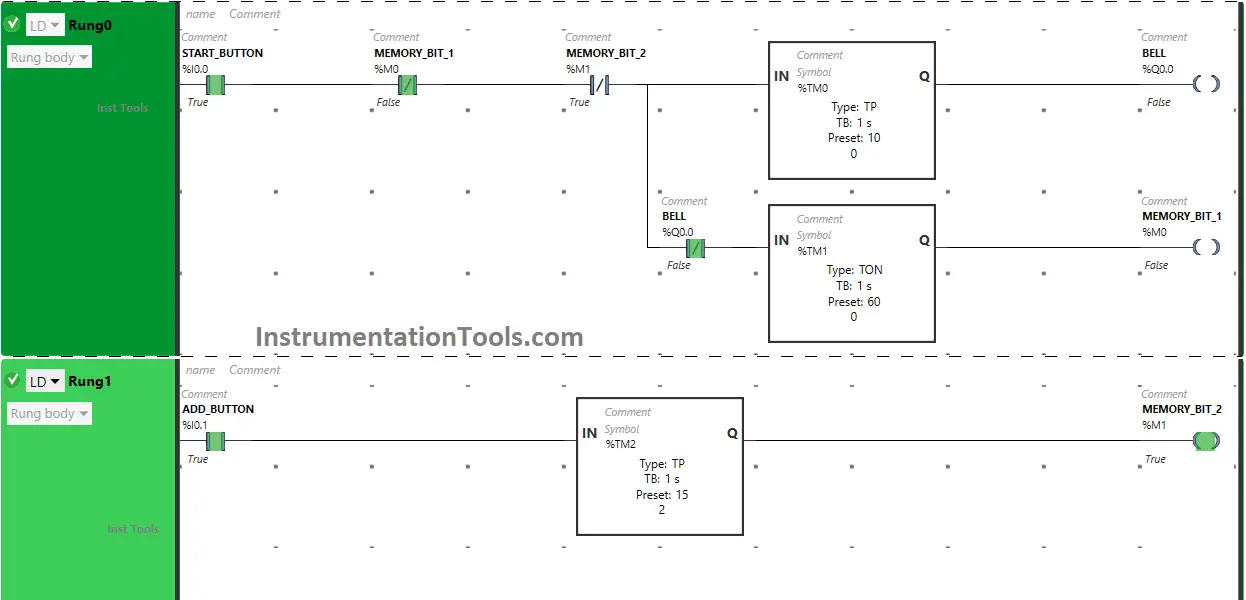
After 15 seconds, Memory Bit 2 (M1) will turn OFF. When Memory Bit (M1) turns ON, Normally Closed Contact used for Memory Bit 2 (M1) will be in True state and Add 15 seconds to delay the turning ON time of the output Bell (Q0.0).
When Timer Function Block type TP reaches its time of 15 seconds, Memory Bit 2 (M1) will turn OFF in Rung1.
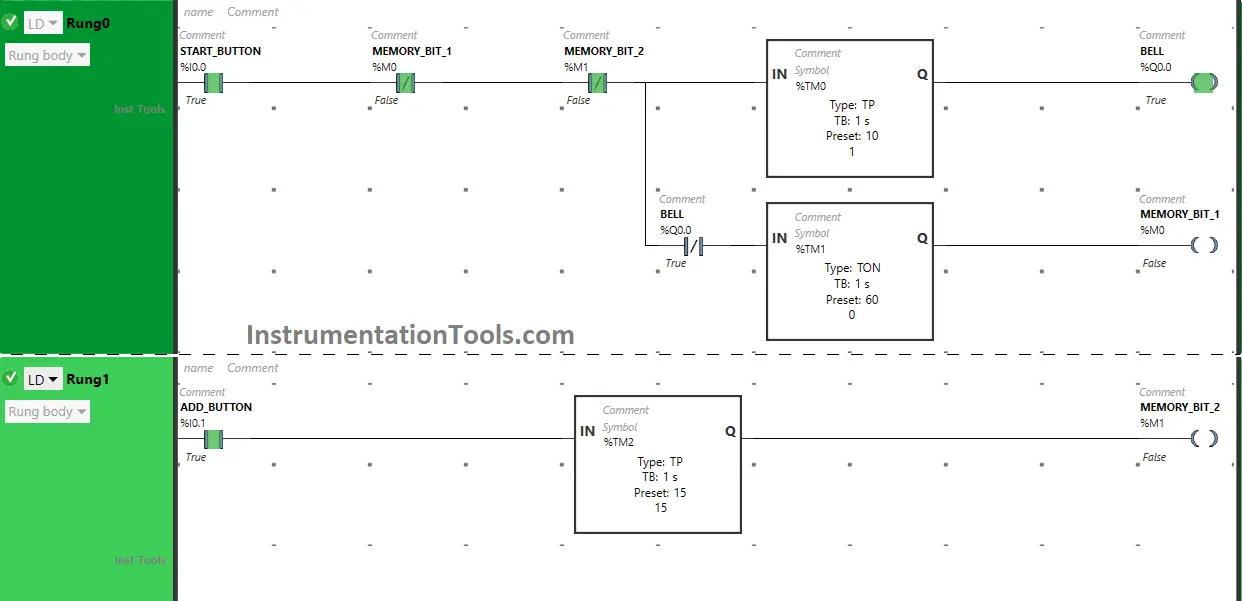
When Memory Bit 2 (M1) turns OFF in Rung1, Normally Closed Contact used for Memory Bit 2 (M1) will be in a false state and allow the signal to pass through it to turn ON the output Bell (Q0.0) and the output (Q0.0) will turn ON.
If you liked this article, please subscribe to our YouTube Channel for PLC and SCADA video tutorials.
You can also follow us on Facebook and Twitter to receive daily updates.
Read Next:
- Coffee Machine PLC Programming
- From Boolean Algebra to PLC Logic
- How to Blink Lights in Ladder Logic?
- PLC Example on Bottle Line Control
- Cooking Logic for Kitchen Automation
